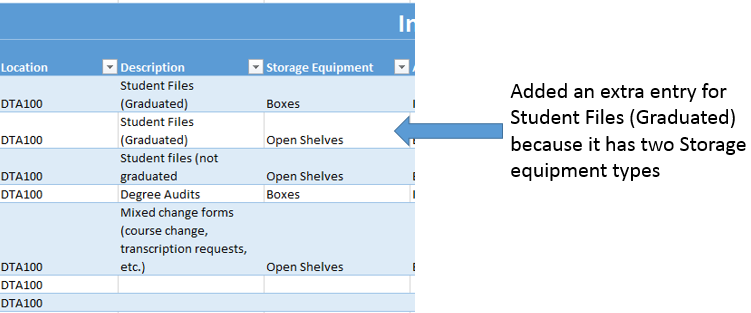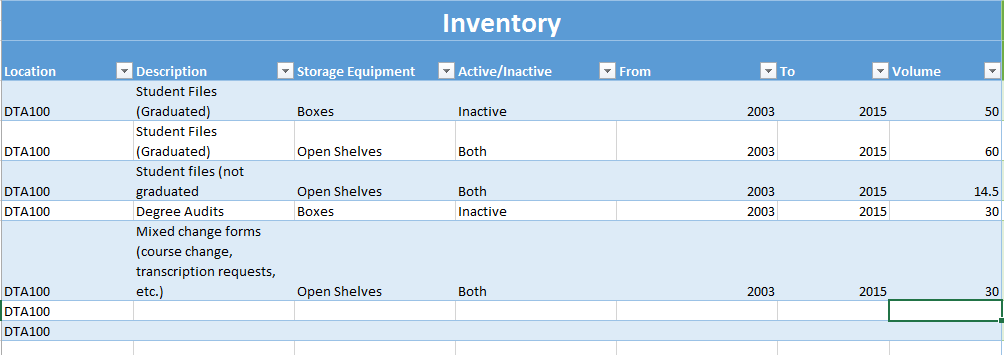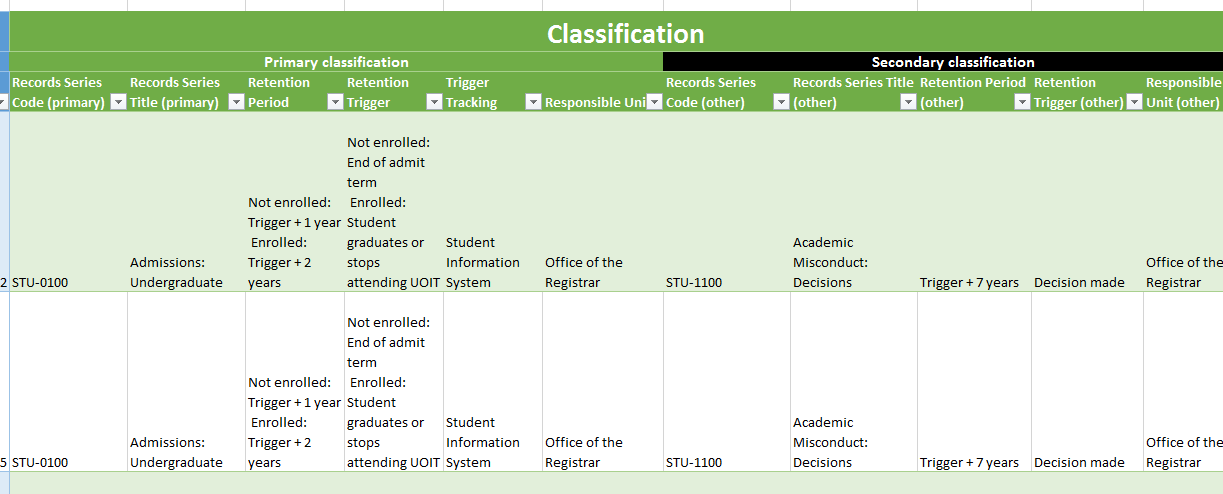Completing the Inventory and Classification Form
This page is part of a series on Implementing the Records Classification and Retention Schedule. Before you can complete an Inventory and Classification form, you must have:
- Identified your storage locations
Prepare an Inventory and Classification Form
The Inventory and Classification Form is used to collect data on the record holdings of a unit. To begin, download the Inventory and Classification Form. Completing the form requires that you have completed the Records Management Questionnaire. A separate questionnaire should be submitted for each location. The questionnaire collects info on:
- Types of records in each location
- Equipment used to store records
- Volume of records
- And more
This information will be expanded on as you complete the Inventory and Classification form.
Inventory

Location: Add your first location from the RM Questionnaire. If there are multiple types of records, you will need to add the location on several rows.
Description: List each type of record from the RM Questionnaire on separate lines.
Storage Equipment: For each record type, list all the different storage equipment used. If you have more than one type of equipment, please add another row for the record type.

Active/Inactive: Indicate whether the records in that storage equipment are active, inactive or both. If there are both, indicate if they are filed separately or mixed together.
Date Range (from/to): Enter the year in which the first record has its retention trigger. Enter the year in which the last record has its retention trigger.
Volume: How many boxes, drawers, shelves, etc. does this type of record fill up? If a record type uses different types of equipment, list the volume for each separately. Use decimals to indicate ¼, ½, ¾ if necessary.

Classify

Use the Records Classification and Retention Schedule (RCRS) to classify your records. Match each record type in the Inventory section with a Records Series from the RCRS.
To view the RCRS, see the Records Classification and Retention Schedule page. The RCRS is broken into eleven major functions. Each of those functions are broken down by responsible unit. The Common Records Series page lists common records series that will apply to many units.
If you need help with this process, please contact recordsmanagement@ontariotechu.ca.
Add the records series code for each type of record series to the Classify section. The Inventory and Classification Sheet will pull the rest of the fields from the RCRS.
Under secondary classification, indicate any other relevant records series code. You may need to reorganize these files containing multiple records series before disposition.
Once you have classified
Complete the Trigger Tracking field. How are you tracking retention triggers? Are you:
- Using an enterprise system (i.e. student or HR information system)
- Using a spreadsheet
- Filing closed files by year they were closed
- Not tracking triggers.
Check the Responsible Unit for the records. If your unit is not the responsible unit your copies are transitory copies. Make sure the responsible unit has their official copy. Transitory copies can be destroyed at your discretion.
We suggest the routine destruction of these records after one or two years. You are free to hold them for longer if you use them often. Do not keep transitory copies longer than the listed retention period from the RCRS.
Once you have completed the Inventory and Classification form, it is time for the next step. Please return to steps 4 and 5 of Implementing Retention and Disposition for the first time.
